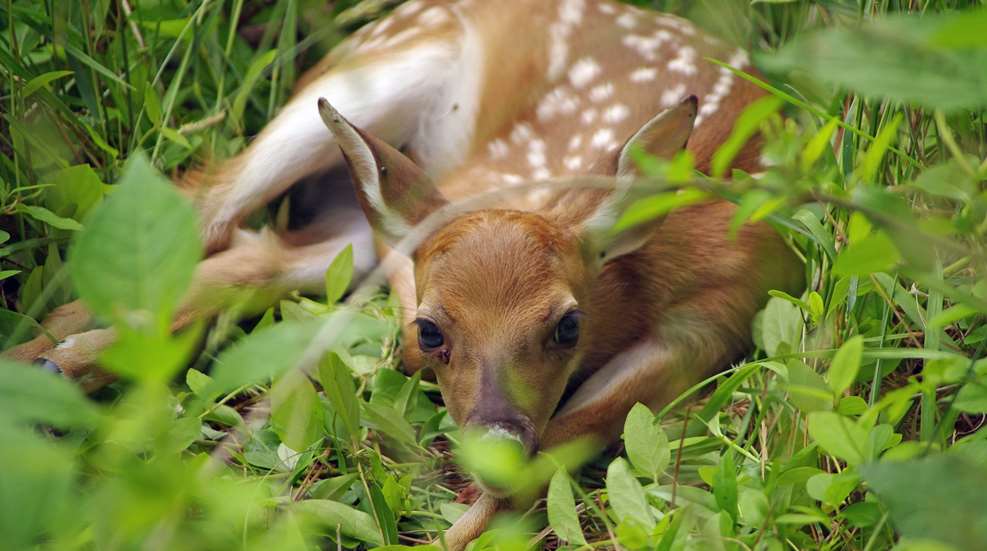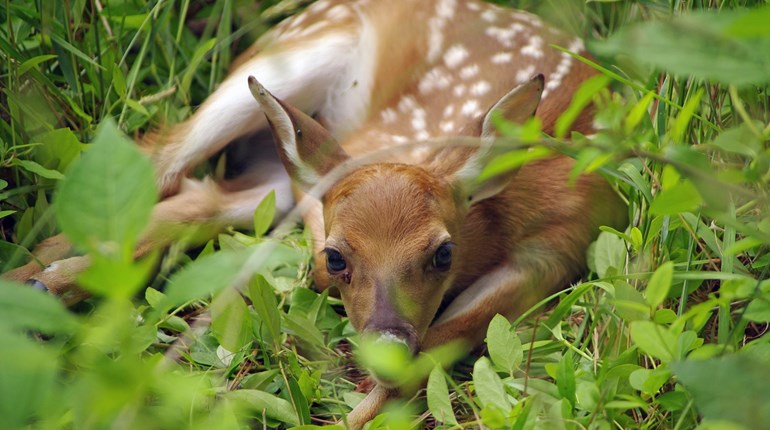
The Arkansas Game and Fish Commission has a message that works for the other 49 states, too: Many species of wildlife have their young in spring, and too many well-meaning citizens disrupt that process. It's common for people to call their state Game and Fish Commission to report deer fawns and other young wildlife that look abandoned. But moving these animals can actually cause more harm than good.
Most wildlife cannot be with their young nonstop. They must search out food for their offspring or gain much-needed nutrition to continue nursing them. It’s not uncommon for a doe deer or rabbit to leave her young alone nearly all day while she eats and recuperates from the stress of nursing. Mother and father birds also take many trips scouring the nearby area for food they will bring back to the hatchlings.
It can be a shock to a person to see these young animals in such a helpless position, but this is how these species survive. In fact, the more trips back and forth a mother makes to her young in the wild, the more scent trails she leaves behind for predators to possibly follow.
Often, a doe deer is within hearing distance of her young, even though you may not see her. The best defenses fawns and rabbit kits have are to stay motionless so they blend into their surroundings and stay quiet so they don’t attract unwanted attention. Baby birds almost ready to fly hop around in the tree branches exercising their wings, and often end up on the ground a few times before finally getting the hang of things. Parent birds will continue to feed them on the ground until they fly off on their own.
Moving “orphaned” wildlife works against this plan. Instead of rescuing them, well-meaning people often mistakenly take them from their mothers and have little to no experience or idea on how to help that young animal. Wildlife rehabilitation permittees often are overwhelmed by kidnapped young owls and other birds that were mistakenly “rescued” by well-meaning people.
If you do find a young animal and have taken it from the area, the best practice is to place it back where you found it as soon as possible. In cases where the spot may have been unsafe because of a nearby road or predator, you can move the animal slightly and its mother will find it. Forget the wives' tales about the mother rejecting the young because of your scent; when she comes back to the area, she will take care of her young regardless.
According to Dr. Jenn Ballard, state wildlife veterinarian for the Arkansas Game and Fish Commission, young deer and elk present an additional challenge because it is illegal for a rehabilitator to take them in per state rules. These can vary from state to state, but even if it's legal where you are, there are excellent reasons not to do so.
“The transport of live deer can help spread chronic wasting disease, a fatal neurological disease in deer, elk and other cervids,” Ballard said. “Research in Arkansas indicates that it is possible for a fawn to be born with CWD, and that deer could not only infect others at a rehabilitation site, but contaminate their facility, making it possible to spread the disease to any future rehabilitated cervids.”
If you happen upon a fawn, you must leave it where you find it. Just because an adult deer was found dead nearby does not mean the fawn is alone. That deer that was hit by a car may not be the fawn’s mother. Even in cases where the mother has been killed, there is still a chance other does are nearby that will take in the fawn as their own if they find them. In either case, that animal’s best chance of living a healthy life in the wild is for people to step aside and let Mother Nature take care of things.






































